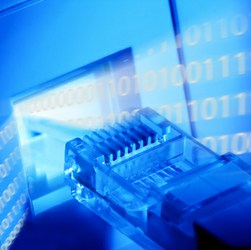|
|

By
Reza Vaez-Ghaemi
Wide scale deployment of broadband services is driving the deployment of Ethernet in carrier networks. Multiple Protocol Label Switching-Transport Profile (MPLS-TP), and Provider Backbone Bridging (PBB) will improve the scalability of Ethernet networks, while Ethernet/MPLS Operations, Administration, and Maintenance (OAM) features enable fault and performance management in wide area networks. With Precision Time Protocol (PTP) and Synchronous Ethernet, timing and synchronization services can be carried over packet switched networks. Finally, High Speed Ethernet and Optical Transport Networks (OTNs) enable cost effective transport of high-bandwidth data services over metro core networks.
It is important to take a careful approach to managing the complexities of deploying these services – this includes considerations such as a comprehensive suite of instruments, systems and software to provide an end-to-end approach for testing and evaluation of emerging Carrier Ethernet features in the lab and field. This article takes a close look at those key challenges and some best practices for successful Carrier Ethernet deployment.
|
|
The time is right to get Carrier Ethernet right, now: so much rides on its success. |
|



Switching/Multi-Protocol Label
Switching Transport Profile (T-MPLS/
MPLS-TP), Ethernet OAM, Synchronous
Ethernet, and Time Division Multiplexing
over IP (TDMoIP) are some examples of
major Carrier Ethernet initiatives.
MPLS- TP is based on the same layered
|
|
|
|
|

One clear signal being sent from the market today - the time is right to get Carrier Ethernet right, now: so much rides on its success. Consider the magnitude of the following - the expansion in the number of broadband Internet users and the growing use of multimedia applications is causing backbone Internet traffic to increase at a rate approaching 100% per year. Meanwhile, enterprises are asking for the ability to tie their sites together with simple and cost effective Ethernet services. Increasing broadband service penetration demands a transport network that delivers significantly lower cost-per-bit than traditional circuit switched networks. Ethernet provides the benchmark for cost-efficient transport technology so it should come as no surprise that Carrier Ethernet networks are emerging as key components in business Voice over Internet Protocol (VoIP), disaster recovery, video conferencing and wireless backhaul applications as well as consumer Triple-Play service delivery.
Improved OAM capabilities
The Ethernet community has been
continuously adding capabilities to
native Ethernet in order to deliver a
carrier-grade transport alternative to
legacy time division multiplex (TDM)
technologies. Provider Backbone Bridge/
Provider Backbone Transport (PBB/
PBT), Transport Multi-Protocol Label
|
|

networking principles that are used in
familiar transport network technologies
like SDH, SONET and OTN so it aligns
well with existing management
processes and work procedures. PBB
adapts Ethernet technology to carrier
class transport networks using the
layered Virtual Local Area Network
(VLANS) tags and MAC-in-MAC
encapsulation with connection oriented
features and behaviors that are also
inspired by SDH/SONET. The result is
that Carrier Ethernet networks
facilitate service aggregation and work
in concert with network infrastructure
and tunneling technologies that
provide Quality of Service (QoS),
redundancy and scalability across the
network.
The new standards will provide improved OAM capability to the customer premises demarcation point, potentially reducing operating expenses (OPEX) by more than half. Multiple standards deliver building blocks for managing the access layer:
- 802.3ah OAM addresses managing the physical layer from the provider edge (PE) to the media access control (MAC) layer of the remote device
- Metro Ethernet Forum (MEF) Ethernet Local Management Interface (E-LMI) addresses managing the User Network Interface (UNI) of the remote device
- 802.1aj Two-Port MAC Relay (TPMR) addresses managing a customer demarcation device
|
|
|







